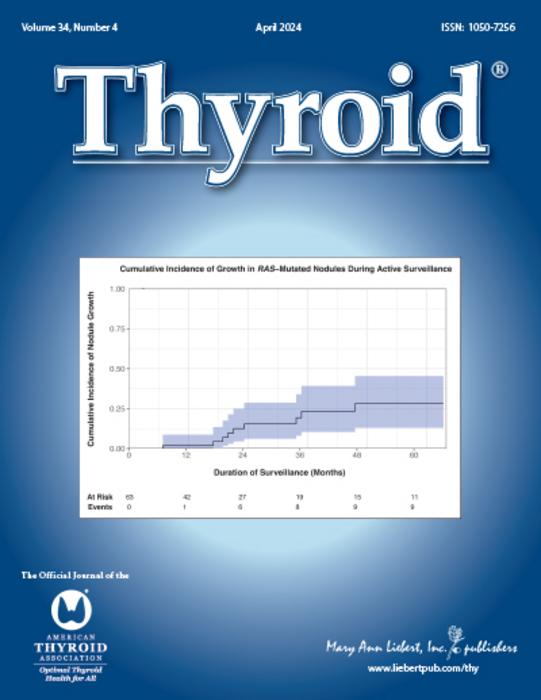
Thyroid eye disease patients report maintained improvement 2 years after teprotumumab infusions
Most patients with thyroid eye disease treated with teprotumumab didn’t require additional treatments nearly 2 years later, according to industry-supported research being presented Sunday at ENDO 2024, the Endocrine Society’s annual meeting in Boston, Mass., and published in the journal Thyroid.
“Thyroid eye disease is a lifelong autoimmune disease that can worsen or flare, regardless of how it has been treated. This is the case for many autoimmune diseases,” said George Kahaly, M.D., Ph.D., professor of medicine and endocrinology at Johannes Gutenberg University Medical Center in Mainz, Germany. “Given the enduring nature of thyroid eye disease, it is important to understand whether patients who are treated with a full course of teprotumumab (eight infusions) can expect to experience lasting improvements in signs and symptoms, like eye bulging and double vision.”
Due to the longevity of thyroid eye disease, Kahaly added, it was important to look at longer-term results after treating patients with teprotumumab. Kahaly and colleagues sought to answer whether or not patients with thyroid eye disease would see sustained improvements in eye bulging (proptosis) and double vision (diplopia).
The study was sponsored by Amgen, which manufactures teprotumumab.
The researchers analyzed pooled clinical trial data beyond the 24-week treatment period for patients in phase 2, OPTIC, and OPTIC-X studies who received a full course of teprotumumab, up to week 72 (51 weeks post-final teprotumumab infusion). They also investigated whether or not patients received additional therapy from week 24 through week 120 (99 weeks post-therapy) as a measure of persistent benefit.
The data revealed patients who received teprotumumab mostly maintained efficacy 51 weeks after the final infusion at week 72.
Nearly two years after the treatment period was complete, 82% of patients did not need further treatment for thyroid eye disease. Of the 106 reporting patients, 18% (19/106) received additional medication, either systemic steroids or teprotumumab, and/or remedial periocular surgery as of 99 weeks post-therapy.
“As physicians consider treatment approaches for their thyroid eye disease patients, they now have longer-term data to support the use of teprotumumab in appropriate patients,” Kahaly said.
About the Endocrine Society

Credit: Mary Ann Liebert Inc.
Most patients with thyroid eye disease treated with teprotumumab didn’t require additional treatments nearly 2 years later, according to industry-supported research being presented Sunday at ENDO 2024, the Endocrine Society’s annual meeting in Boston, Mass., and published in the journal Thyroid.
“Thyroid eye disease is a lifelong autoimmune disease that can worsen or flare, regardless of how it has been treated. This is the case for many autoimmune diseases,” said George Kahaly, M.D., Ph.D., professor of medicine and endocrinology at Johannes Gutenberg University Medical Center in Mainz, Germany. “Given the enduring nature of thyroid eye disease, it is important to understand whether patients who are treated with a full course of teprotumumab (eight infusions) can expect to experience lasting improvements in signs and symptoms, like eye bulging and double vision.”
Due to the longevity of thyroid eye disease, Kahaly added, it was important to look at longer-term results after treating patients with teprotumumab. Kahaly and colleagues sought to answer whether or not patients with thyroid eye disease would see sustained improvements in eye bulging (proptosis) and double vision (diplopia).
The study was sponsored by Amgen, which manufactures teprotumumab.
The researchers analyzed pooled clinical trial data beyond the 24-week treatment period for patients in phase 2, OPTIC, and OPTIC-X studies who received a full course of teprotumumab, up to week 72 (51 weeks post-final teprotumumab infusion). They also investigated whether or not patients received additional therapy from week 24 through week 120 (99 weeks post-therapy) as a measure of persistent benefit.
The data revealed patients who received teprotumumab mostly maintained efficacy 51 weeks after the final infusion at week 72.
Nearly two years after the treatment period was complete, 82% of patients did not need further treatment for thyroid eye disease. Of the 106 reporting patients, 18% (19/106) received additional medication, either systemic steroids or teprotumumab, and/or remedial periocular surgery as of 99 weeks post-therapy.
“As physicians consider treatment approaches for their thyroid eye disease patients, they now have longer-term data to support the use of teprotumumab in appropriate patients,” Kahaly said.
About the Endocrine Society
Endocrinologists are at the core of solving the most pressing health problems of our time, from diabetes and obesity to infertility, bone health, and hormone-related cancers. The Endocrine Society is the world’s oldest and largest organization of scientists devoted to hormone research and physicians who care for people with hormone-related conditions.
The Society has more than 18,000 members, including scientists, physicians, educators, nurses and students in 122 countries. To learn more about the Society and the field of endocrinology, visit our site at www.endocrine.org. Follow us on Twitter at @TheEndoSociety and @EndoMedia.
About the American Thyroid Association®
The American Thyroid Association® (ATA) is dedicated to transforming thyroid care through clinical excellence, education, scientific discovery and advocacy in a collaborative and diverse community. ATA® is an international professional medical society with over 1,800 members from 43 countries around the world. The ATA® promotes thyroid awareness and information through Clinical Thyroidology® for the Public, a resource that summarizes research for patients and families, and extensive, authoritative resources on thyroid disease and thyroid cancer in both English and Spanish. The ATA® website www.thyroid.org serves as a bona fide clinical resource for patients and the public who look for reliable thyroid-related information.
About the Publisher
Mary Ann Liebert, Inc. is a global media company dedicated to creating, curating, and delivering impactful peer-reviewed research and authoritative content services to advance the fields of biotechnology and the life sciences, specialized clinical medicine, and public health and policy. For complete information, please visit the Mary Ann Liebert, Inc. website.
Journal
Thyroid
DOI
10.1089/thy.2023.0656
Method of Research
News article
Subject of Research
People
Article Title
Long-Term Efficacy of Teprotumumab in Thyroid Eye Disease: Follow-Up Outcomes in Three Clinical Trials
Article Publication Date
3-Jun-2024